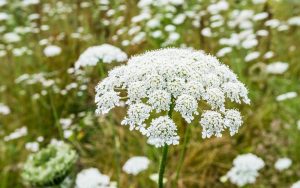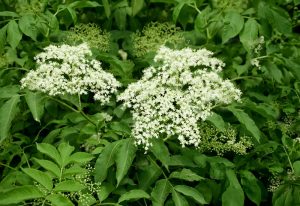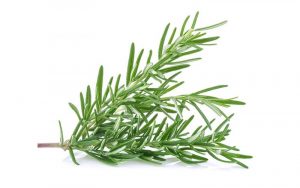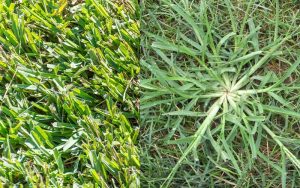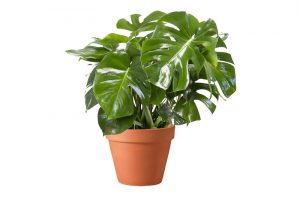You may know or not, but some plants bear a resemblance to other weeds and plants. The surprising fact is: however they resemble yet have different species or genres. Just like that, we found 5 plants that look like wheat. Many of them fall in the group of weeds.
They amusingly look so similar to the real wheat herb that will leave you with bemusement. But one important thing you must know, some of these can be toxic or invasive to livestock or pet animals. Hence, you must know which wheat-looking plants are harmful. We discussed this too in the article.
So, what do you need to consider for identifying natural wheat plants and the look-alikes? Let’s find the facts out.
What is Wheat Plant & Explanation
In simple terms, wheat plants are grass that grows annually. They are usually 0.4-1.2 meters. They grow in a small-scale group together and can carry tillers around 5-40 per plant. Wheat has various species that are different from each other in grain morphology, size, and inflorescence.
The variety comes from the variety of different growth conditions and utilization. Their culms have a cylindrical-like appearance and are erected. Hollow internodes and hard nodes are carried. The flat leaves range from 1×3 × cm (20-38) cm in length. Their inflorescence is slender, long and somehow has flattened spikes.
In addition, the plant makes flowers that hold up yellow, white, or red-brown seeds. These are also referred to as grains. At its early stage of growth, the wheat looks green. However, the color is changed gradually and turns golden-brown when properly ripened.
Wheat is an essential crop and staple food for us and is harvested most across the world. Hence, you should know its characteristics, usefulness, and plants that have identical similarities with it. Now, let’s find those identical plants from the next para.
5 Grass & Plants That Look Like Wheat
Below we mentioned 5 plants that look like wheat that are found often. They belong to the Poaceae lower classifications. To know more about such plants, you can also read a Poaceae family pdf.
1. Foxtail
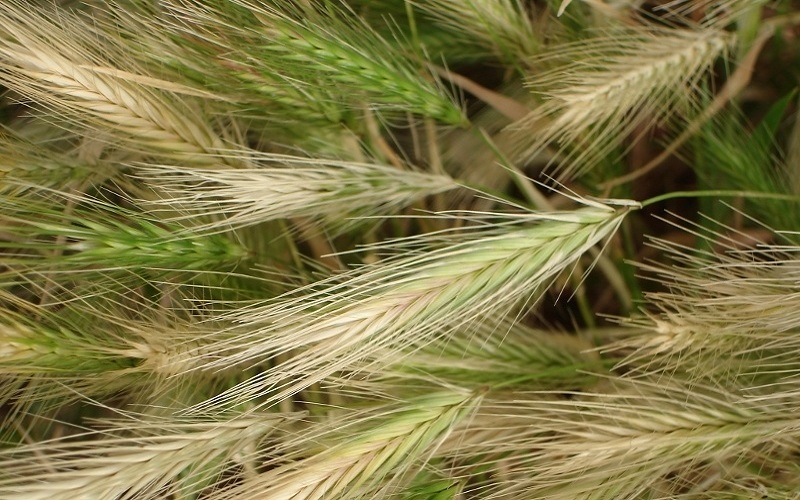
Foxtail is a lawn seed that is produced annually in the warm season. It is grass that most often grows in a fertile and moist lawn. Their scientific name is Setaria Glauca. The stems of Foxtail grass are flattened. Their branches are located at the bottom and look reddish.
They can reach up to 4 feet. Their leaves are flat, smooth, and grow lengths from two to twelve inches. They are half a half-inch wide. Often the leaves grow with rough edges and spiral hair around 1/8 inches. These twisted hairs are located at the upper surface of the leaves’ base.
The yellow Foxtail resembles wheat when their seed gets 2-5 inches bristly, cylindrical seed heads. Generally, starting from June – September, it grows with such appearance. Many feel bothered when foxtail grass excessively grows. You can still control its growth by applying a pre-emergent herbicide.
Apply it before early summer or late spring since in these two periods, they germinate. You can also apply the herbicide when the seedlings emerge while the weed herbs are small.
2. Ryegrass
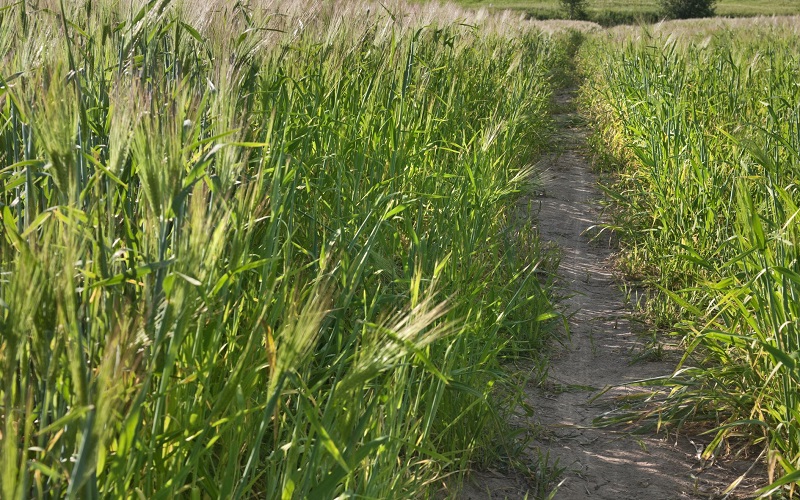
Ryegrass also takes one year to grow; however, they grow in cool seasons. It looks like wheat because the seed heads look almost the same. It contains spaced spikelets alternatively growing up from the stem. Their length can reach around 3 feet and their leaves are rolled inside of the bud. The undersides are glossy. The spikes of the seed heads are long up to four to sixteen inches.
If you go to measure the leaf blades of Ryegrass, you will see it is twenty-two/two to eight inches long. The stems are found under the leaf sheath, and their bottom looks reddish. There is another type of Ryegrass that is perennial and has similarities with annual Ryegrass. Perennial Ryegrass plants don’t have a red-tinted stem bottom.
Just follow three simple steps you can control Ryegrass from growing rapidly. First, you need to use any non-selective herbicide while the plant’s active. Second, lowering the mowing is a good option. The final way of controlling its growth is fertilization and irrigation. Yes, you have to fertilize and irrigate the turf grass so that it improves in density. It will leave a little space for letting the Ryegrass grow further.
3. Quack Grass

One of the 5 plants that look like wheat is Quackgrass. Quack grass plants are grassy weeds with perennial broadleaf. It’s one of the Poaceae examples. This one also grows in the cool season, and the grass has wider blades that make wheat and Quackgrass look the same. This is a common lawn weed. They usually grow in fields of alfalfa. They have a slightly darker shade than most other turfgrasses found.
It looks like outer similarities with the wheat that getting confused with the two is an easy trap to fall into. However, it has a feature in its root system. The root system is extensive, and it helps the plant grow rapidly in fields. It’s because controlling their rhizomes is quite difficult.
Do you want to understand in an instant which one is quack grass? It’s simple; all you have to check is its clasping auricles. There is a point where the stem connects with the leaf blade base of quack grass; you will notice two projections that look like fingers. You find them hooked around it.
Sometimes gardeners face too many difficulties and fail to have control in their growth. In such a case do one thing, just burn the entire area and start growing them again. Also, you can follow the ways of controlling the Ryegrass growth for Quack grass. It will work most of the time.
4. Hare Barley
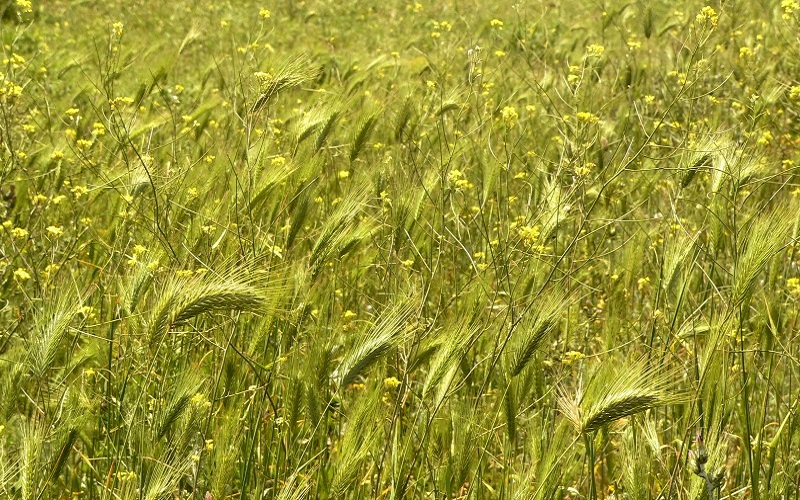
Hare Barely is scientifically named Hordeum murinum spp. It is also known as winter barley or wild barley. it’s a weedy grass growing in winter. It flourishes in western lands. It’s an extremely invasive plant that generally grows in lawns.
If you want them to look beautiful on your lawn, you have to get some professional lawn care. Their length of becoming tall can go up to three feet. However, usually, they can attain one or two feet height.
Their auricles are well grown, stick to their stem and produce flat and narrow leaves. The appearance also includes hairy leaves that range from half to a quarter cm in breadth. Hare Barely can make spikes starting from April to June. Their nodes later break apart when they mature.
It’s an ideal food for the livestock. But remember to keep caution when feeding, ensure that they have not turned into poisonous meals. It gets toxic after the seed heads get matured.
The low-lying crops have to face trouble because of the long growing nature of Hare Barely. They don’t let low-lying crops grow properly in alfalfa fields. Now, if you already have these in your garden and they are in excess, you have to do certain things to deal with them.
When you see a small breakout of the plant, the number one way is to apply some weed killer. The second way is removing small infestations. Do manual digging or mowing to eliminate the infestation. You can also heavily graze the field before Hare Barely reaches its maturity with the help of livestock.
The last way to control the Hare Barely growth is to hire an expert lawn service provider specializing in weed control.
5. Barnyard Grass

Last on our list of 5 plants that look like wheat is Barnyard. This is the annual lawn plant of the list that looks like wheat is Barnyard grass. The Barnyard grass scientific name is Echinochloa TIt usually emerges in the summer season. It includes thick stems and coarse that resemble fine wheat. They are capable of growing tall up to 5 feet long.
The seed heads of these plants can grow to an average of 16 inches and are open. They drop the spikelets when they hit maturity. Their leaf blades stay rolled inside of the shoot. It spreads well and can overcrowd the crop seedlings.
The excessive amount of barnyard grass can cause hindrance to the growth of crops since they stop nutrients, sunlight, and water from getting to the crops. To deal with their overgrowing tendency, use pre-emergent herbicide on the weed in the yard.
How Safe Is Eating Wheat Look-alike Plants?
There are quite a good number of plants on our planet that not only look like wheat but are also edible. But one sad fact is since they are wild yielded crops, they taste bitter. Yes, they can be cooked, roasted but they will still taste so bitter that you will not want to eat them again.
For example, Foxtail grass is edible and resembles wheat, but you can only eat them if bitterness doesn’t bother you. Also, just plucking them up and eating directly would be a foolish thing to do. If you truly intend to taste the Foxtail, you need to first burn up all the fuzz off through a lighter.
Now, strip the seeds off, and peel off them. But remember not to eat the inner stocks. Just like it, you can have the wild yielded edible crops. But make sure you know which of them are not harmful to your body.
T non-toxic wheat like wild crops is not a bad option when you need something to eat for snacks. But wait, you must know which commonly found wheat alike or false wheat crop can poison you. Let’s get to know this important fact next.
Some False Wheat that Can Intoxicate You
In general, plants that resemble wheat but have differences in many characteristics are referred to as false wheat. Now that you know, eating edible wild crops that have similar looks like wheat are possible; you must also get knowledge on which of them can Intoxicate you. So, we included them in the 5 plants that look like wheat.
Save yourself from consuming poison by knowing them well. We are mentioning here two most common to find wheat-like plants that can leave you with disease or something more dangerous. Those are the two mentioned below. Also, check poisonous wheat-looking grass Wikipedia for more information.
Darnel
People have been intoxicated after eating Darnel because they used to think it is edible and healthy since they grow in the same zone as wheat. They have huge similarities with one another that people in several regions call Darnels false wheat.
Until Darnel gets the ears, they keep almost the exact appearance of wheat. They can cause you some serious disease that you will not want to get affected by if eaten.
Ryegrass
Unlike Foxtail, Quackgrass, and some other edible weeds, Ryegrass is not suitable for eating. It contains some bacteria that are known as Rathayibacter toxicus that produce toxins in it.
It will produce poison in your body after you eat or take them and can cause fatal diseases. Ryegrass carries these toxins by its Anguina funesta nematode. Even if it is eaten too much, its toxicity will start reacting in your body, and within a few hours, it may cause death.
Frequently Asked Questions (FAQs)
What plant looks like wheat?
Ryegrass resembles wheat most. Both the seed heads of wheat and Ryegrass look almost the same. Their spikelets have spaces unlike the Quack grass, which gives it more of a similarity with the wheat. They belong to the Poaceae family plants list. Also, recheck the 5 plants that look like wheat to know more.
What are the weeds that look like wheat?
The number of weeds that look like wheat is quite big. However, some of them are commonly found, especially in lawns. Such weeds are Darnel, Foxtail, Ryegrass, Quack grass, Hare Barley, and so on.
What is the wild grass that looks like wheat?
Much wild grass has look-alike similarities with wheat. Among them, Foxtail is very popular. They are usually grown on the lawns and are edible. However, they don’t taste good enough and don’t provide any special element to our bodies.
What are flowers that look like wheat called?
Argentea var. Spicata Wheat celosia is a yearly grown perennial or short-living plant. The reason for it getting the “Wheat celosia” name is because of its flowers. They have spikes almost like the wheat sheaf and thus got popularity with the name wheat celosia.
Final Words:
Our planet has diversity in plants. However, some plants resemble one another, but they have a few differences too. So, we need to have knowledge regarding them and use the plants only that are safe.
For keeping ourselves safe, we need to identify which plants are not original to what we want. Some plants, especially with Poaceae family characteristics, look so similar to wheat.
Since wheat is one of our healthy foods, we should know the differences and identifications and its Look-alikes. Therefore, we picked 5 plants that look like wheat. Please get to know them well and stay safe from poisonous wheat-looking weeds.

